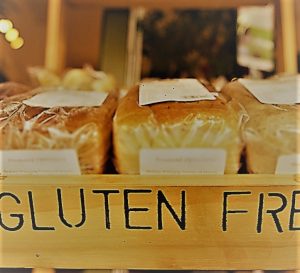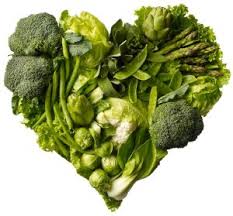
Inflammation: the foundation for all dis-ease
Inflammation is a term that you’ve probably heard a lot.
Many conditions arise in the body as a result of chronic inflammation and the problem is most of us eat inflammatory diets. Food allergies are also on the rise and these also result in inflammation throughout the body.
 Common allergens include dairy, wheat, corn, soy, peanuts, coffee, artificial sweeteners and MSG.
Common allergens include dairy, wheat, corn, soy, peanuts, coffee, artificial sweeteners and MSG.
Early signs and symptoms of an allergy include digestive disturbances such as bloating and flatulence, skin conditions such as eczema or urticaria, watery or itchy eyes, arthritis, joint pain or fibromyalgia (to name a few) then it’s worth investigating food allergies. Treatment for allergies include removal of ALL possible allergens for at least 2-4 weeks then slowing reintegrating each food one at a time. Most reactions will show up in the hours following the consumed food.
Even if you don’t have any known food allergies most of us still need to reduce inflammation as the western diet is typically inflammatory!
I like to keep in mind that every food we eat has an effect on our bodies.
Our food choices can have a medicinal effect on our bodies, helping to alkalise, reduce inflammation and protect the body against disease, or we can choose to feed it inflammatory foods that do the exact opposite.
The net effect of the typical Western diet is acidic which lays the foundation for dis-ease in the body, as well as weight gain. Whilst a small amount of inflammation is OK – it’s the body’s natural defence mechanism against intruders – the problems begins when our body strays into a constant state of inflammation (known as chronic inflammation) as a result of our diet & lifestyle choices.
Every mouthful, every meal is a choice.
It doesn’t mean you need to avoid acidic foods altogether. In fact, many acidic foods contain vital nutrients that we need as part of a balanced diet. But if you eat a highly acidic meal, be mindful to complement with alkalising foods to balance out, for example a steak with a green leafy salad and a cup of organic green tea.
It also doesn’t mean we can’t enjoy our lives and splash out every so often- remember the 80/20 rule!
Broadly speaking, here is some guidance for pairing foods to create a pH neutral effect;
| Acidic / Inflammatory | Alkalising / Anti-inflammatory | |
| Alcohol |
x |
|
| Apples |
x |
|
| Artificial additives | x | |
| Artificial sweeteners | x | |
| Beets | x | |
| Bone Broth | x | |
| Broccoli | x | |
| Chia Seeds | x | |
| Chicken | x | |
| Coconut oil | x | |
| Coffee, tea, chocolate | x | |
| Dairy | x | |
| Dark chocolate (good quality/sugar free 70-85% cocoa) | x | |
| Eggs | x | |
| Fruits | x | |
| Garlic | x | |
| Ginger | x | |
| Gluten free wholegrains | x | |
| Green tea | x | |
| Legumes (varied – see table below) | x | x |
| Miso | x | |
| Nightshade fruits and vegetables (tomato, eggplant, potato) | x | |
| Nuts (particularly almonds) | x | |
| Olive Oil (particularly Extra Virgin) | x | |
| Omega-3 rich fatty fish such as Wild Caught Salmon | x | |
| Oysters | x | |
| Peanuts | x | |
| Pineapple | x | |
| Pork | x | |
| Raw honey (not the supermarket stuff) | x | |
| Red meat (particularly grain fed animals) | x | |
| Red peppers | x | |
| Rosemary | x | |
| Sugar | x | |
| Trans fat foods | x | |
| Turmeric | x | |
| Vegetable oils (high in Omega 6) & deep-fried foods | x | |
| Vegetables: particularly green vegetables & leafy greens | x | |
| Wheat / gluten | x |
| Legumes | Acidic / Alkaline | Complete protein (containing all AAs) | Notes |
| Dried Beans | Mildly alkaline | No | |
| Chickpeas (aka garbanzo/ceci beans) | Mildly acidic | No | Provide vitamins and minerals as well as protein for satiety |
| Black bean | Acidic | No | |
| Kidney bean | Acidic | No | |
| Lentils | Mildly alkaline | No | |
| Mung bean | Mildly alkaline | No | |
| Lima beans | Mildly alkaline | No | The lowest amount of protein compared to all others |
| Pinto beans | Mildly alkaline | No | |
| Navy beans | Mildly alkaline | No | |
| Red beans | Mildly alkaline | No | |
| Sprouted beans | Alkaline | No | |
| Soy beans | Mildly alkaline | Yes |
|
| White beans | Mildly alkaline | No | The highest protein containing legume but not complete |
| Peanuts | Acidic | No | |
| Alfalfa | Alkaline | No |
Broadly speaking, most fruit and vegetables are alkaline, so if you follow the way of eating that is primarily plant based, then your meals should automatically balance themselves out.
 If you can change your mindset to think vegetables first, then grains, then protein and fats – when you’re shopping, planning and preparing meals – then you’re onto a good start and you shouldn’t have to analyse the combinations too much.
If you can change your mindset to think vegetables first, then grains, then protein and fats – when you’re shopping, planning and preparing meals – then you’re onto a good start and you shouldn’t have to analyse the combinations too much.
Every week my husband and I head out to the local organic markets and fill a huge shopping basket with fresh vegetables and some fruit. I experiment with different types of greens that you can find at the markets, and make it my mission during the week to find recipes that use up all the veggies on hand. Because it’s bought from the market it tends to stay fresh all week so the only top up shop I do is to complete a missing ingredient. I then buy the relevant protein as I need it depending on the recipes I’ve chosen.
Most westerners think the opposite way – when we think about a meal we usually think of protein first, then what we can put with it.
Try it in reverse and you’ll not only be able to manage your weight far more effectively, but you’ll be rewarding your body with nourishing, alkaline and anti-inflammatory foods!






